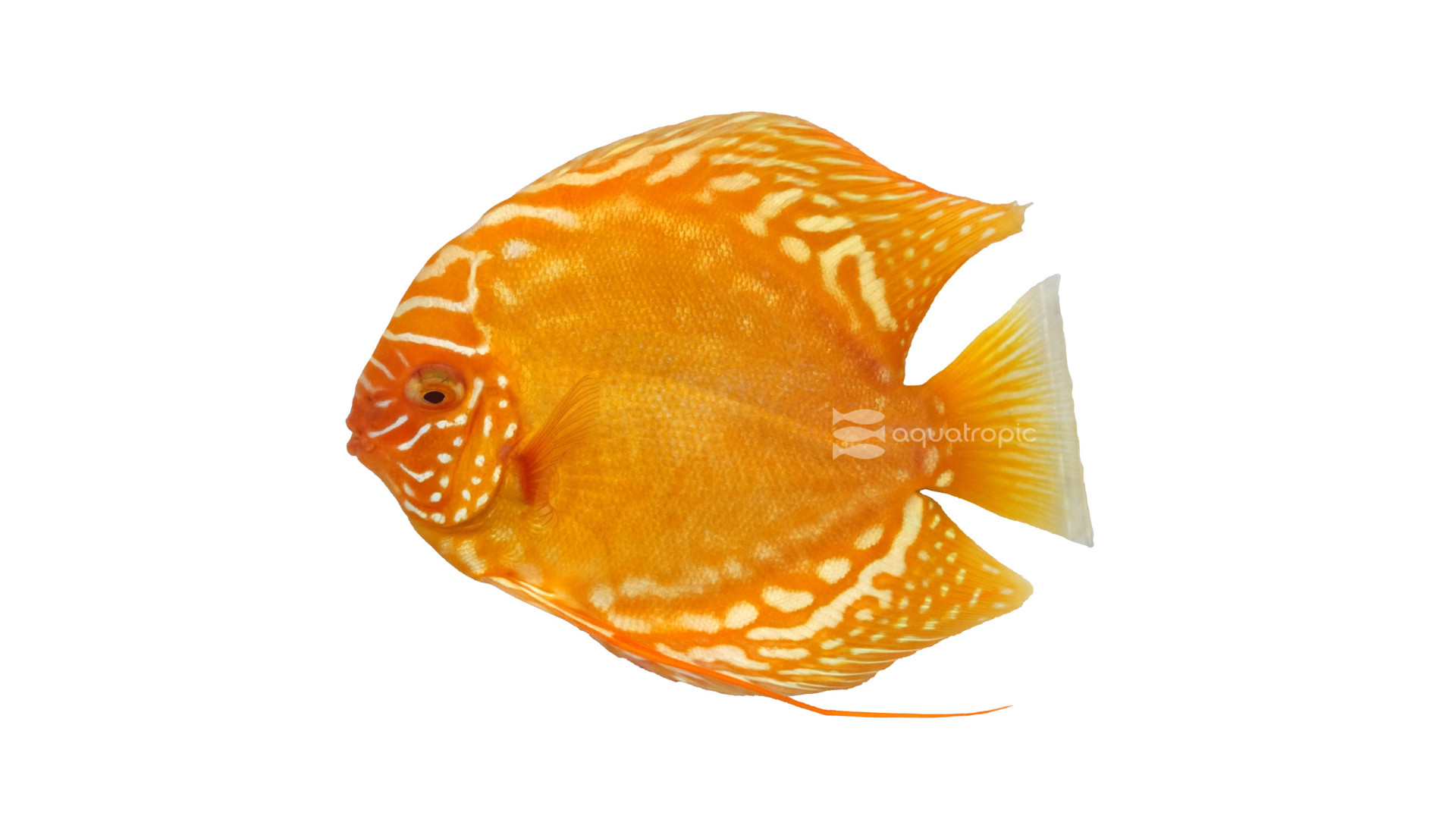Lord Marlboro Turns Yellow

The Yellow / Albino Marlboro Discus (Symphysodon aequifaciatus) is a member of the Cichlid family, originally native to the Amazon River and some of its tributaries. These discus were mostly tan or cream colored with hints of color on their fringes, or maybe some vertical barring, and they can still be found with this coloration both in the wild and in some Local Fish Stores around the world. Yellow Marlboro Discus are one of a myriad of amazing patterns and colorations available to home aquarists as a result of decades of selective breeding. These fish will develop even better color throughout their lives and have body shape that makes them totally unique in the aquarium world. These and other colorations of aquacultured discus available through Aquatropic partner stores can be seen here: https://www.qualitymarine.com/aquatropic/fish/discus.
All Discus are tall bodied and somewhat static, and so they do best in aquariums that are tall. We suggest displays that are at least 20 inches tall, and 55 gallons as an absolute minimum for a small group of five. Though 90 and 110 tall aquariums don't take up much more footprint and offer a lot more volume and vertical space. Displays should have gentle, diffuse flow and plenty of cover. Discus like slow moving water with lots of branches and vegetation in the wild, and these preferences still exist for captive bred and raised specimens.
The native environment for Discus has water that is generally low in pH and hardness (dkh), though this is mostly important now only if one is hoping to spawn them. Discus are almost exclusively captive bred these days, and the farms that they come from have water that is slightly less soft and slightly higher pH than their wild environment. Still, these farms exist in generally warm places and thus keep their water temperature between 82- and 90-degrees Fahrenheit. When maintaining temperatures this high, a few things happen. First, warm water holds less oxygen, so adding extra aeration is important. Secondly, warm environments speed up metabolism so fish will need to eat more and will produce more waste. We suggest the low end of this temperature range for the home hobbyist, think 78-84 degrees Fahrenheit or so.
The Yellow Marlboro Discus can get fairly large (up to about eight inches), new Discus keepers have a tendency to feed them larger food items than is appropriate for their small mouths. As captive bred fish, simple foods will usually be accepted easily. They are omnivores, and a balanced diet will help them attain their best coloration and boost their immune system. We feed them Nutramar Freshwater Complete Pellets in house. Take care not to overfeed your Yellow Marlboros as these pellets are very protein and nutrient dense, and thus overeating is a possibility. Discus are slow feeders and need to be kept with more passive fish that won't out compete them for food. Fish like Angelfish, small Tetras and Corydoras that can handle high temperatures are some of the better choices. Breeding Yellow Marlboros can be done but is difficult for the home aquarists. If trying your hand at these interests you, start with a bigger aquarium (75 gallons plus) and buy 6 or more similar sized fish (obviously, they don't all have to be Yellow Marlboros). As the pairs naturally form, start removing unpaired fish until you have only paired fish in the display. They will lay eggs on smooth vertical surfaces like large leaves or stones, and parents will work together to defend the nest and the babies when they hatch. Getting the fry to a free-swimming size is one of the coolest accomplishments you can have as a home aquarist. The baby Discus will follow the parents incredibly closely and will feed off of the parents' slime coat. Don't get your hopes up for raising babies successfully for the first few spawns. New pairs are usually terrible parents, so don't expect them to succeed past laying eggs until they gain some experience.
Like all discus, Yellow Marlboro Discus' appearance is very dependent on the general health and even mood of the fish. Stressed fish will adopt darker colors and their barring will be more noticeable. Fish with bad nutrition will get skinny and pale. This is a sign you need to change something in their diet. They are not as challenging to keep as they once were, but we still recommend that hobbyists have some experience keeping other fish before diving into Discus care. They may take a bit more attention than the easiest cichlids, but they are among the most beautiful and rewarding fish you can keep in a freshwater aquarium. If you are ready for the Discus display you've been dreaming of, head to your LFS and ask them about Yellow Marlboro Discus (and the huge myriad of other morphs) available from Aquatropic today!